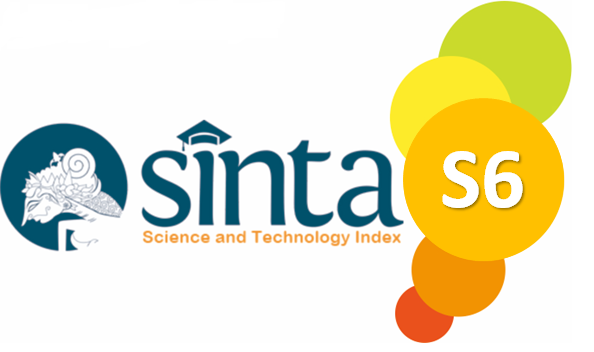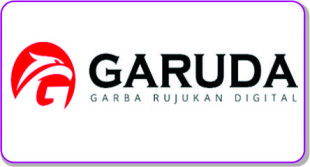Studi Kelayakan Pemanfaatan Air Tanah untuk Air Bersih Berdasarkan Parameter KMnO₄ di Wilayah Gambut dan Pesisir Kabupaten Kubu Raya
DOI:
https://doi.org/10.33557/b44wnb28Keywords:
air tanah, KMnO₄, zat organik, kawasan gambut, kawasan pesisirAbstract
Groundwater constitutes the source of potable water for communities in regions lacking access to piped water services, a category that includes Kubu Raya Regency, which is characterized by a peat and coastal ecosystem. The objective of this study is to analyze the suitability of groundwater as a source of clean water based on its organic matter content (KMnO₄). Samples were collected from 17 points, including dug wells (representing shallow groundwater) and bore wells (representing deep groundwater), employing the purposive sampling method. Laboratory analysis employed the permanganometry method in accordance with SNI 06-6989.22-2004. The findings indicated that the KMnO₄ content in peatlands was significantly higher than in coastal regions, with maximum concentrations exceeding 200 mg/L in dug wells in Rasau Jaya 2, Parit H. Muksin, and Kuala Dua. In coastal regions, the levels of KMnO₄ were predominantly below 50 milligrams per liter (mg/L). The analysis revealed that all samples exhibited levels of TDS that were below the permissible limit as stipulated in Permenkes No. 32 of 2017, which stipulates a maximum limit of 10 mg/L for KMnO₄. The values of KMnO₄ demonstrated a positive correlation with the intensity of water color and a negative correlation with increasing well depth. This condition is indicative of the profound impact of organic matter resulting from vegetation decomposition in peatlands and natural filtration processes in the deep soil layer. The analysis indicates that groundwater in both areas is not suitable for direct use without treatment. To ensure safe and sustainable clean water, oxidation, coagulation-flocculation, and multiple-layered filtration processes tailored to local characteristics are required.
References
[1] Z. Damanik, A. Jaya, B. Radjagukguk, dan C. Adam, “Influence of Water Table and Peat Thickness on Dissolved Organic Carbon of Tropical Peat Soil with Sulfidic Substratum from Central Kalimantan, Indonesia,” J. Multidisiplin. Appl. Nat. Sci., vol. 4, no. 1, 2024. DOI: https://doi.org/10.47352/jmans.2774-3047.189
[2] E. Agustina, “Pengaruh Eco-Enzyme pada Air Baku Sungai Borang Palembang terhadap Nilai Parameter Conductivity, Total Dissolved Solid (TDS), dan Zat Organik,” J. Kolaboratif Sains, vol. 5, no. 6, 2022. DOI: https://doi.org/10.56338/jks.v5i6.2382
[3] M. A. A. Mazhar, S. Madhav, S. Ahmed, P. Kumar, dan C. Springer, “Drinking Water Chlorination and Disinfection by-Products: Formation, History, and Regulations,” dalam Drinking Water Disinfection By-products, S. Madhav, M. A. A. Mazhar, S. Ahmed, P. Kumar, dan P. K. Mishra, Eds. Cham: Springer, 2024. DOI: https://doi.org/10.1007/978-3-031-49047-7_2
[4] C. Chen, S. Andrews, dan Y. Xie, “Disinfection By-Products in Water”. Cham: Springer, The Handbook of Environmental Chemistry (HEC, vol. 135), 2024
[5] N. Dhanda dan S. Kumar, “Water disinfection and disinfection by products,” Environ. Monit. Assess., vol. 197, p. 461, 2025. DOI: https://doi.org/10.1007/s10661-025-13915-9
[6] N. Nawan, H. E. Shinta, H. Priskila, S. Handayani, dan R. Abdurahman, “Quality of the peat water and its association with public health problems in the community of the Danau Tundai area,” J. Kedokteran dan Kesehatan Indonesia (JKKI), vol. 14, no. 2, 2023. DOI: https://doi.org/10.20885/JKKI.Vol14.Iss2.art7
[7] Kementerian Kesehatan Republik Indonesia, Peraturan Menteri Kesehatan Republik Indonesia Nomor 32 Tahun 2017 tentang Standar Baku Mutu Kesehatan Lingkungan dan Persyaratan Kesehatan Air untuk Keperluan Higiene Sanitasi, Kolam Renang, Solus per Aqua, dan Pemandian Umum, Jakarta, 2017.
[8] S. K. Chakraborty, P. Sanyal, dan R. Ray, “Pollution, environmental perturbation and consequent loss of wetlands,” dalam Wetlands Ecology, Springer, Cham, 2023. DOI: https://doi.org/10.1007/978-3-031-09253-4_8
[9] N. Yusniartanti, “Efektivitas oksidator kuat kalium permanganat (KMnO₄) dalam proses oksidasi besi terlarut (Fe²⁺) dalam air tanah,” Envirotek: J. Ilm. Tek. Lingkungan, vol. 15, no. 1, 2023. DOI: https://doi.org/10.33005/envirotek.v15i1.217
[10] R. W. Ningrum, M. Zainuri, dan S. Y. Wulandari, “Studi kandungan dan sebaran bahan organik di perairan Kota Pekalongan,” Indones. J. Oceanogr., vol. 6, no. 2, pp. 159–164, 2024. DOI: https://doi.org/10.14710/ijoce.v6i2.18193
Downloads
Published
Issue
Section
License

Jurnal Tekno by journal.binadarma.ac.id/index.php/jurnaltekno is licensed under a Creative Commons Attribution-ShareAlike 4.0 International License.









